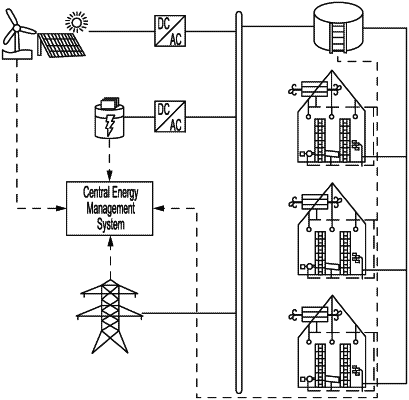| CPC G05B 19/042 (2013.01) [F24F 2130/10 (2018.01); F24F 2130/20 (2018.01); F24F 2140/00 (2018.01); G05B 2219/2614 (2013.01)] | 24 Claims |

|
1. A method for controlling an environmental system, comprising:
creating, at the same time, a distinct microclimate in each of a plurality of greenhouses that are networked together, wherein the distinct microclimate in each of the plurality of greenhouses is created by defining a lighting power reference signal of a lighting power, a carbon dioxide concentration reference signal of a carbon dioxide concentration, and a temperature reference signal of a temperature tailored for a specific crop in each of the plurality of greenhouses;
receiving renewable resource information related to each of the plurality of greenhouses, wherein the renewable resource information comprises water load information for each of the plurality of greenhouses from a water reservoir;
receiving dynamic weather information of an environment external to each of the plurality of greenhouses;
integrating, in each of the plurality of greenhouses, the lighting power reference signal, the carbon dioxide concentration reference signal, the temperature reference signal, the renewable resource information, and the dynamic weather information into a network controller device configured to control the distinct microclimate in each of the plurality of greenhouses;
determining, via the network controller device, an optimization control scheme for the specific crop that satisfies the lighting power reference signal, the carbon dioxide concentration signal, and the temperature reference signal while taking into account the renewable resource information and the dynamic weather information;
dynamically regulating, via the network controller device, the lighting power, the carbon dioxide concentration, and the temperature in each of the plurality of greenhouses according to the optimization control scheme;
dynamically controlling the water reservoir between a discharging mode and a charging mode based on time and an electric power load of the environmental system; and
determining an amount of water flow entering the water reservoir based on power consumed by a main pump of the environmental system,
wherein the carbon dioxide concentration is dynamically regulated according to different phases of growth of the specific crop.
|